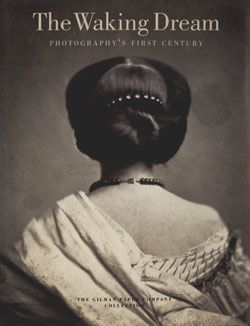[Study for a Decorative Panel]
Alphonse Mucha Czech
Not on view
The graphic art of the Czech artist Alphonse Mucha was the embodiment of the curvilinear aesthetic of Parisian Art Nouveau. Enshrining woman, his posters, calendars, theater programs, and decorative panels feature sensuous yet ethereal maidens caught in decorative swirls of unloosed tresses, flowing gowns, and floral arabesques. An amateur photographer early in his career, Mucha used photographs of carefully posed models to supplement preliminary sketches for larger works.
This photograph is a study for "Tragedy," a decorative panel Mucha created in 1908 for the short-lived German Theater in New York; it was to be his last major undertaking in the Art Nouveau style before he redirected his efforts to history painting. Intended as a compositional study of two models, the image in close-up is invested with a powerful erotic charge, making it a psychological study of a couple. Like her sisters in Mucha's posters, the woman in the photograph remains detached and free, while the young man, her lover, appears in enthralled surrender. The position of the woman's hand, so characteristic of Mucha, expresses a sphinxlike knowingness. Construed as a vision of a new, inconstant Eve rising from the flank of a prostrated Adam, or as an illustration of the male-female component within the psyche, the image poses a tantalizing riddle.
Due to rights restrictions, this image cannot be enlarged, viewed at full screen, or downloaded.
![[Study for a Decorative Panel], Alphonse Mucha (Czech, Ivančice 1860–1939 Prague), Gelatin silver print](https://images.metmuseum.org/CRDImages/ph/web-additional/DP-12992-001.jpg)

